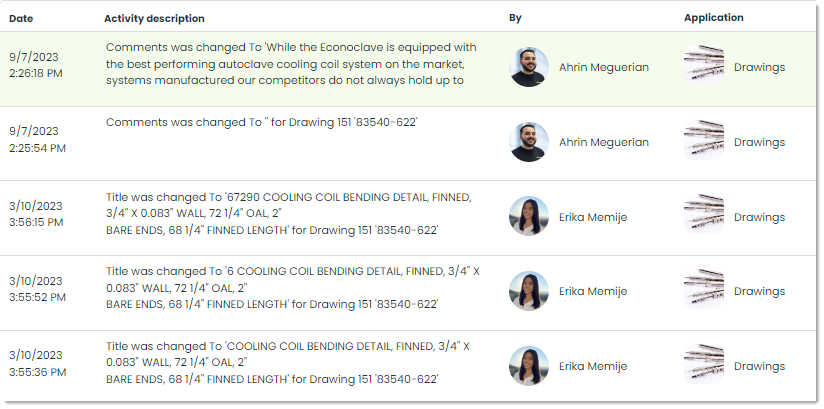Table of contents
Getting Started with Drawings
Thursday September 7, 2023-8 min readIntroduction
In Appward, drawings refer to detailed technical documents that provide visual representations of a product or component. Drawings are used to communicate design specifications, manufacturing requirements, and assembly instructions to engineers, designers, manufacturers, and suppliers involved in the production process.
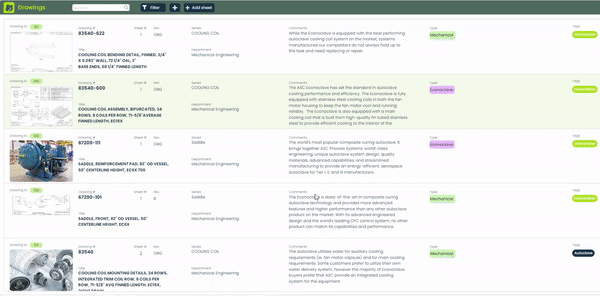
Getting Started
To open the Drawings app, go to the Manufacturing category of the main navigation bar and select Drawings.
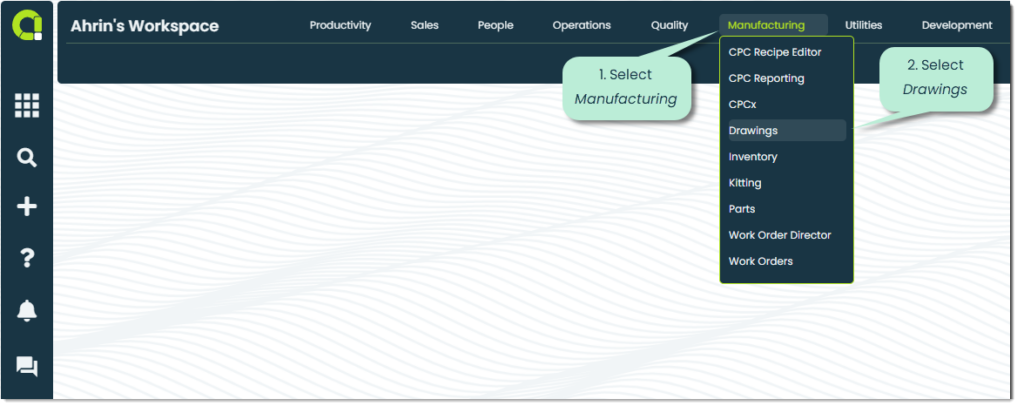
When you first open the Drawings app, you will be shown a list view of all previously created Drawings records within your organization.
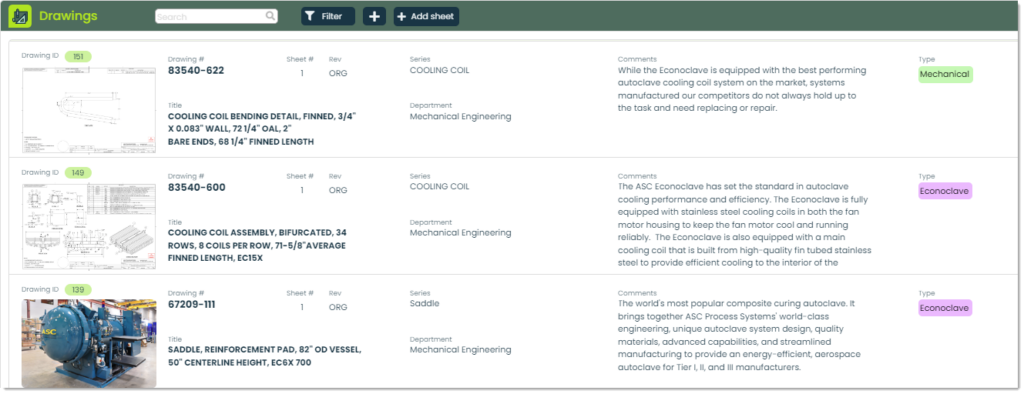
Note: If your organization has not previously created any records in Drawings, this pane will be empty. Let’s go over how to add a drawing.
How to add a new drawing
You can add new drawings by clicking the + button at the top of the app screen.
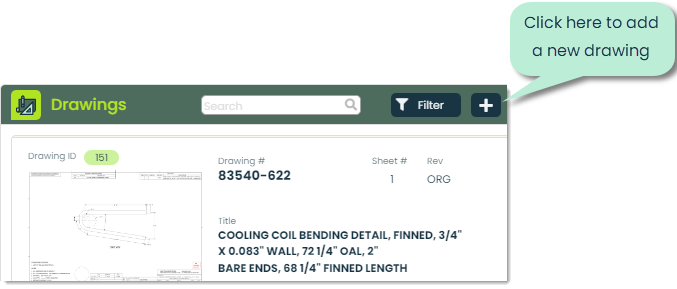
Doing so will bring up a screen for adding in new drawing information. Let’s go over the different fields.
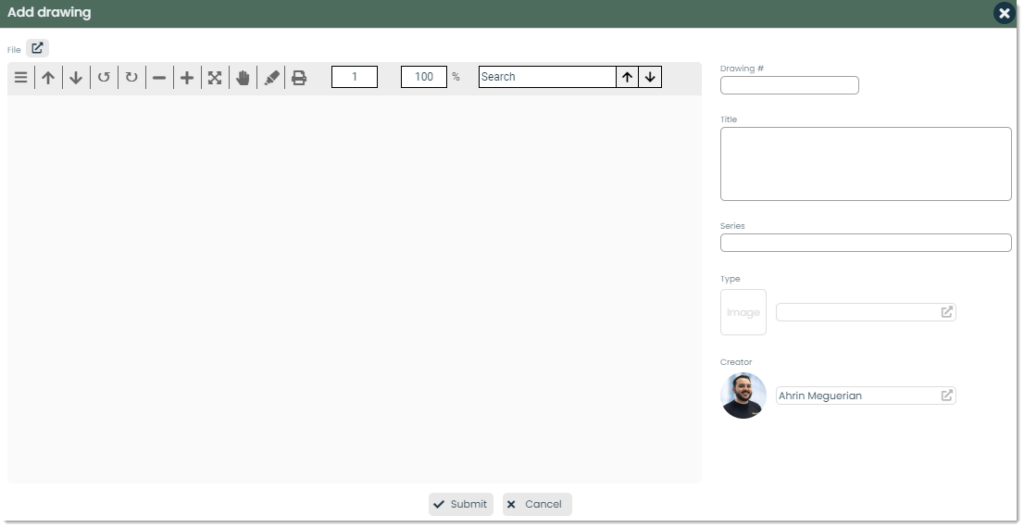
File: Incorporating files into records plays a vital role in maintaining context and ensuring no important details are overlooked within Drawings. You have the ability to link images by utilizing the file picker, which provides direct access to Appward’s file explorer.

Preview: In this section, you can preview the file you upload for each drawing record. You can also make last-minute modifications or comments using Appward’s integrated file viewer.

Drawing #: Drawing numbers serve as references for unique technical drawings, plans, or blueprints in engineering and design projects. They play a vital role in maintaining organization, managing version control, and facilitating effective communication within your team.

Title: This is where you can give your drawing a Title. Titles are located in the bottom right-hand corner of a drawing and contain important details.Within titles, you’ll find the designer’s name, description, part number, material, weight, and general tolerances.

Series: Series are used to define a set or group of related designs that share common characteristic specifications.

Type: You can categorize drawings by the type you select. In Appward, types are a helpful way of categorizing your information to make it easier to sort, find and get insights from your data. As an example, Types can be used within Drawings to distinguish between mechanical, electrical, or civil.

Creator: The creator of the Drawing record will be assigned to the Creator field.

How to view Drawings
If your organization has already created Drawing records, you will have access to a comprehensive list. If you wish to view or manage the details of a Drawing, you can do so by click anywhere on the row of the record you wish to open.

You will then be presented with a flyout showing you all the essential details about the drawing. There are a few fresh fields in this view, let’s go over them.
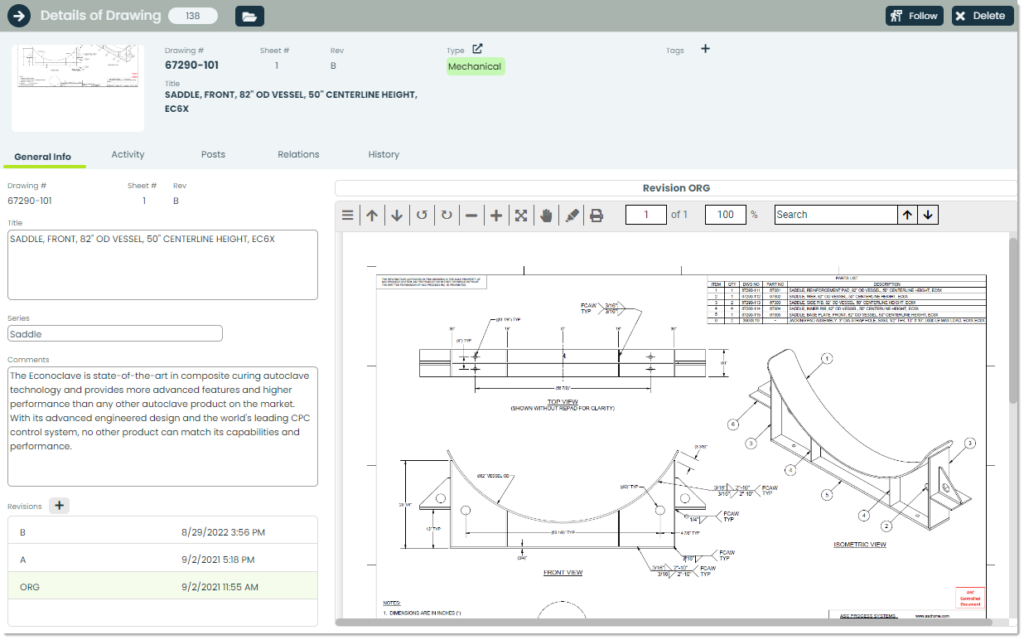
Comments: With comments, you can provide written notes, annotations, and remarks that provide additional information, instructions or observations during various stages of a manufacturing process.

Revisions: Revisions are a crucial component during the design and development of a product, component, or process. You can create and upload as many revisions as necessary by using the + symbol and selecting the desired file from Appward’s built in file explorer.
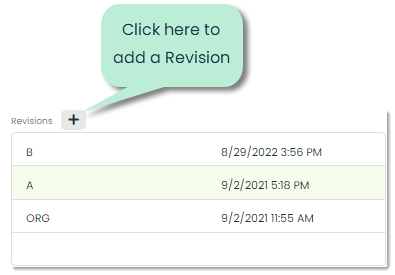
You can view the activity history of the drawing record by accessing the Activity tab within the detail flyout.
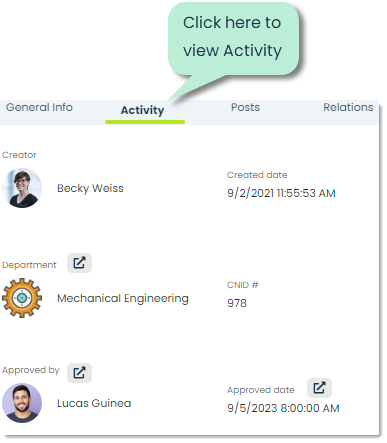
In Activities, you have the ability to review significant timestamps related to drawing records. Let’s look at the fields and go over what they are displaying.
Creator: This is where you can see the date, time, and the name of the creator for the record of the drawing you are viewing.

Department: In this field you can define the name of the department this drawing is relevant to. You can also view the Change Notice Identification(CNID) number which refers to a specific change within the Changes app.

Approved by: You can define the approving entity for the drawings within this field. When chosen, the date in Approved Date will reflect the approval date.

Frontline features of Drawings
Posts: In Appward, a post is a comment that can be liked or replied to directly by other members of your organization. A common use of posts in Drawings is to send quick messages about the approval process of a drawing.

History: With History, you can access detailed information about the status changes of a drawing record, including the employee responsible for the update, the timestamp of the modification and a brief description of the activity performed.
